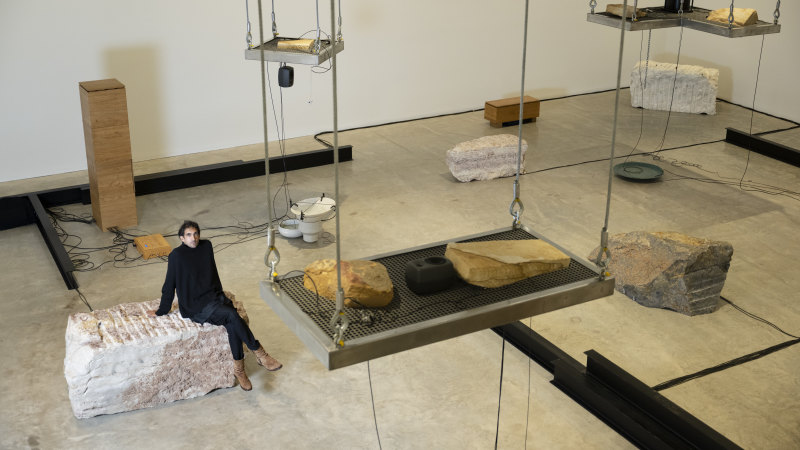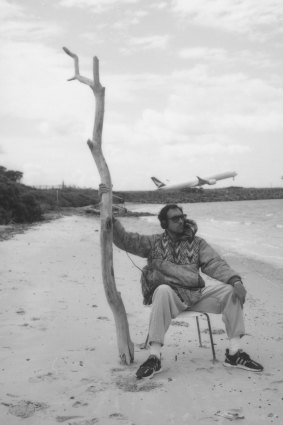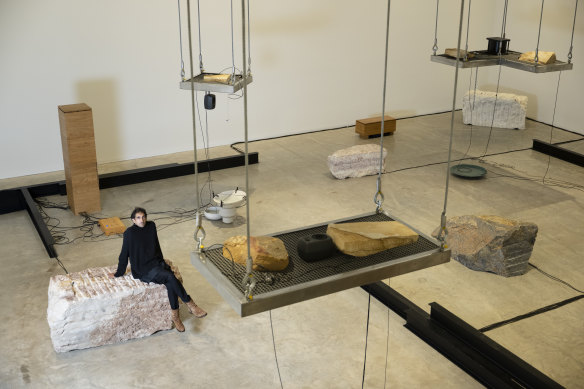If you listen carefully, you’ll hear Sydney’s ‘lasagne’ of sound

Save articles for later
Add articles to your saved list and come back to them any time.
Artist, performer and composer Tarek Atoui calls the field recordings he has collected around Botany Bay a multilayered “lasagne” of sound.
Atoui on site in Botany Bay.Credit:
Atoui has spent hours making the “complex and intriguing” recordings around Frenchmans Bay, both above and below the water. They include birdsong, insect noises, passing aeroplanes, skylarking beachgoers and even underwater noise from ships and boats. It all adds up to an endlessly fascinating acoustic landscape, says the Beirut-born artist.
“There are so many layers. There is a peaceful coexistence of natural sounds, industrial sounds and social sounds. It really is one of the most complex places in terms of sonic stratas coexisting in one place.”
Atoui’s Sydney recordings are the latest instalment in a 10-year project that has resulted in him travelling the world from his Paris home to port cities including Athens, Abu Dhabi, Singapore and Athens.
Each city has its own unique acoustic identity. The Athens recordings made the Greek capital seem “hazy, as if wrapped in cotton”, while the super-busy port of Abu Dhabi yielded “bright, sharp and clear sounds”.
The Sydney recordings have now been incorporated in a sound installation, Waters’ Witness, occupying the Museum of Contemporary Art’s Macgregor Gallery. It combines Atoui’s recordings, a number of which are played through blocks of Sydney sandstone or marble, with a series of sculptures both organic and industrial, inspired by the cities in which Atoui has worked.
Tarek Atoui with his exhibition Waters’ Witness.Credit: Janie Barrett
Those with a keen eye will even spot sections of the fibre-glass walkways common in national parks around the state incorporated in the work.
Visitors are invited to sit on and stroll among the pieces to “feel” the sound as much as hear it.
“As soon as you realise the sound is vibrating through these enormous marble stones and metal beams and you can actually sit on them and feel the sound, I think it really shifts your attention,” says curator Anna Davis. “It’s quite an incredible experience to have sound kind of funnelling through your entire body, vibrating through you.”
Atoui and his team captured the sounds using a collection of specialised microphones.
“We have ones that allow us to listen underwater and at the same time to listen in the air,” he says. “There are also microphones that are used to listen inside solid materials, as well as capture the unheard frequencies of radio waves, magnetic waves and other noisy residues the human ear does not hear.”
Atoui chose harbours as the focus for his project because, he says, so much can be learnt about the nature of a city from what happens on its waterways.
“You learn a lot from listening to a harbour and from watching what is inside the harbour and happening on the harbour,” he says.
So, is Atoui a better listener than most?
“No, it’s a bit pretentious to say; not really,” he says. “But I would say that I’m a person who practises listening maybe more than others. After several years of doing this exercise, of getting somewhere, sensing the space, listening to it, then recording it, there is a kind of agility, somehow, in terms of understanding a place from the way it sounds.”
The Booklist is a weekly newsletter for book lovers from books editor Jason Steger. Get it delivered every Friday.
Most Viewed in Culture
From our partners
Source: Read Full Article

